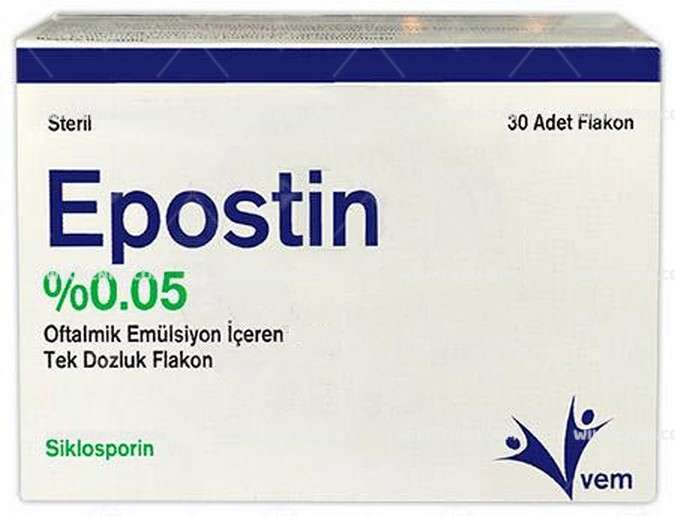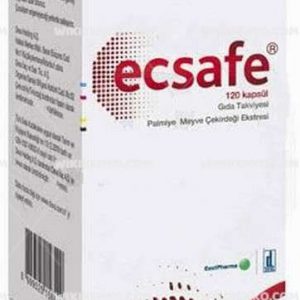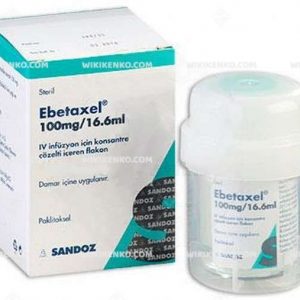Epostin Oftalmik Emulsiyon Iceren Tek Dozluk Vial
Epostin, an ophthalmic emulsion supplied in convenient single-dose vials, holds promise as a solution to ocular inflammation, particularly in the context of keratoconjunctivitis sicca, commonly known as dry eye syndrome. This pharmaceutical product, centered around the active ingredient cyclosporine, serves as a pivotal player in regulating the immune system and mitigating inflammatory responses in the eye.
| Dosage form | |
|---|---|
| Pack size | |
| Potency | %0.05 30X0.4Ml |
| Manufacturer | |
| Origin | |
| Generic Name (Ingredient) | Each Mg Contains 0.5 Mg (0.05%) Of Cyclosporine As The Active Substance. |
Assuming your emergency circumstances for this product, visit Urgent Quotation page. Besides, for any pharmaceutical questions, please ask us in the comments section.
Description
Mechanism of Action
Cyclosporine, a cornerstone of Epostin, operates as a calcineurin inhibitor with profound immunosuppressive properties. Its mode of action involves the inhibition of T cell activation, a critical facet of the immune response. Within cells, cyclosporine forms a complex with cyclophilin-1, aptly named the cyclosporine-cyclophilin1 complex. This complex effectively hinders calcineurin, a protein phosphatase that typically activates T cells.
Consequently, the activation of T cells is curtailed, leading to a diminished immune response. This unique property positions cyclosporine as an invaluable immunosuppressant medication, finding applications in the prevention of organ rejection post-transplantation and the management of autoimmune disorders.
Accessibility and Cost Considerations
Epostin is exclusively available through pharmacies, ensuring accessibility to those in need. As of July 24, 2023, the retail price for a box of Epostin, encompassing 30 single-use vials, stood at 1699.28 TL. The distinctive barcode assigned to Epostin is 86998446114841, facilitating its identification and acquisition.
Usage Guidelines
Epostin takes center stage in combatting ocular inflammation linked to keratoconjunctivitis sicca, more commonly recognized as dry eye syndrome. Its mechanism of action is primarily driven by its capacity to stimulate tear production, a vital intervention for individuals grappling with suppressed tear production due to ocular inflammation.
Dosage and Administration
Optimal therapeutic outcomes are achieved by adhering to prescribed dosing regimens. For Epostin, the recommended dosage entails instilling one drop of the ophthalmic emulsion into each eye, twice daily, with an approximate 12-hour interval between administrations. Notably, Epostin can be used concurrently with lubricant eye drops, provided a 15-minute interval separates the two applications. After each use, it is imperative to promptly discard the vial, ensuring sterility and efficacy.
Contraindications and Precautions
While Epostin offers promising relief, it is not suitable for everyone. Individuals with known or suspected hypersensitivity to any of its constituents should abstain from its usage. Furthermore, care should be exercised to prevent contact between the vial tip and the eye or other surfaces, minimizing the potential for eye injury or contamination.
Epostin Side Effects
Like any pharmaceutical intervention, Epostin may be accompanied by side effects. These can manifest as mild eye discomfort, characterized by sensations such as burning, stinging, redness, discharge, excessive tearing, pain, itching, and visual disturbances. In rare instances, more pronounced systemic effects may occur, including swelling of the hands, feet, face, lips, mouth, or throat, potentially leading to difficulties in swallowing or breathing.
Additional, albeit less common, effects may encompass hemolytic anemia, dizziness, lethargy, headache, light sensitivity, retrobulbar optic neuritis, and concentration disorders. While these effects are generally considered mild, any discomfort or unusual sensations should be promptly reported to a healthcare professional for further evaluation.
Consulting Healthcare Professionals
In summary, Epostin emerges as a valuable therapeutic option for individuals grappling with ocular inflammation, particularly in the context of dry eye syndrome. However, its administration should be guided by healthcare professionals who can tailor recommendations to individual needs.
Prior consultation with a doctor or pharmacist is strongly advised to elucidate the medication’s potential benefits, risks, and interactions in light of your unique medical profile. Your healthcare provider stands as a beacon of knowledge, ensuring your journey with Epostin is both safe and effective
Use the form below to report an error
Please answer the questions as thoroughly and accurately as possible. Your answers will help us better understand what kind of mistakes happen, why and where they happen, and in the end the purpose is to build a better archive to guide researchers and professionals around the world.
The information on this page is not intended to be a substitute for professional medical advice, diagnosis, or treatment. always seek the advice for your physician or another qualified health provider with any questions you may have regarding a medical condition. Always remember to
- Ask your own doctor for medical advice.
- Names, brands, and dosage may differ between countries.
- When not feeling well, or experiencing side effects always contact your own doctor.
Cyberchondria
The truth is that when we’re sick, or worried about getting sick, the internet won’t help.
According to Wikipedia, cyberchondria is a mental disorder consisting in the desire to independently make a diagnosis based on the symptoms of diseases described on Internet sites.
Why you can't look for symptoms on the Internet
If diagnoses could be made simply from a textbook or an article on a website, we would all be doctors and treat ourselves. Nothing can replace the experience and knowledge of specially trained people. As in any field, in medicine there are unscrupulous specialists, differences of opinion, inaccurate diagnoses and incorrect test results.





Reviews
There are no reviews yet.